Search Posts
Recent Posts
- Detailing Manhattan: Christopher Gray’s Legacy – David Brussat April 26, 2024
- Business Beat: BankNewport supports Kids’ Zone at new Save The Bay Hamilton Family Aquarium April 26, 2024
- Rhode Island Weather for April 26, 2024 – John Donnelly April 26, 2024
- GriefSPEAK: Dread. Fear. Welcome relief. – Mari Nardolillo Dias April 26, 2024
- Outdoors in RI: big animals, tiny Ticks, huge Trout, Chepachet’s Harmony Railway, 2A – Jeff Gross April 26, 2024
Categories
Subscribe!
Thanks for subscribing! Please check your email for further instructions.
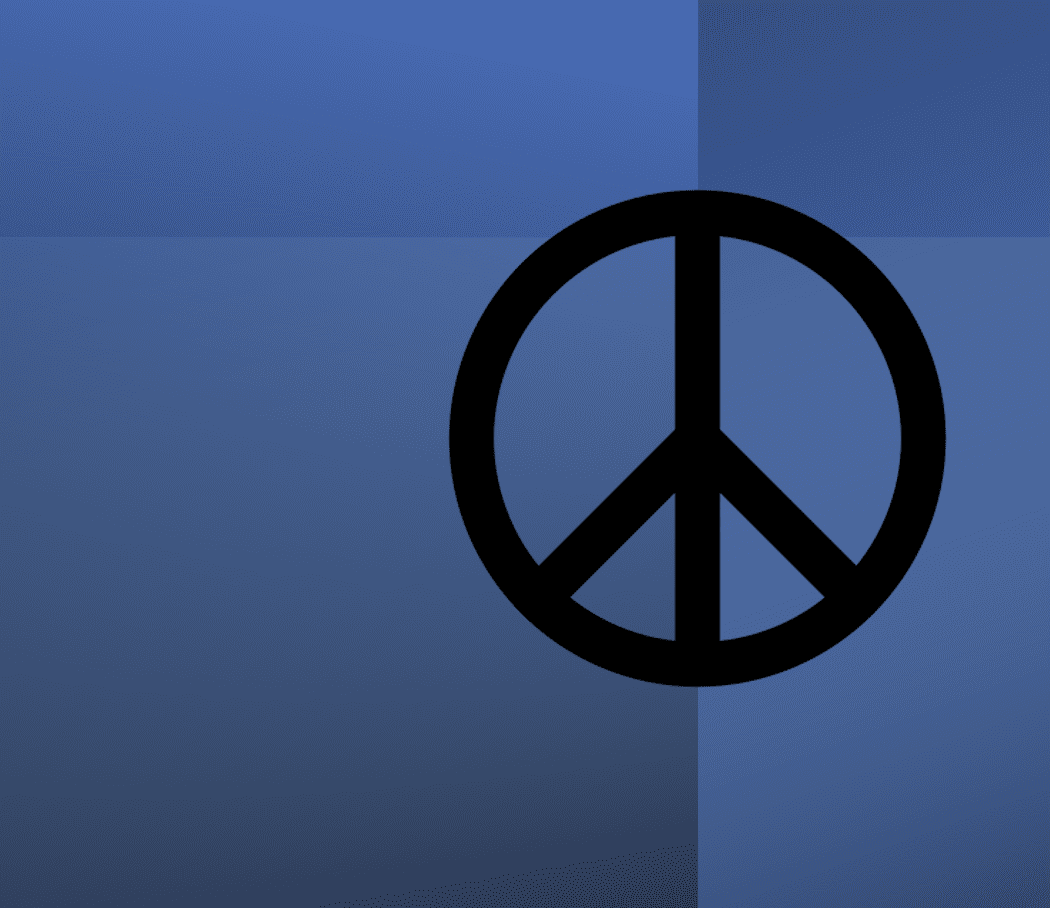
The search for PEACE – Global Peace Index measures peace in a complex world
Each year the Institute for Economics and Peace produces the Global Peace Index, the world’s leading measure of national peacefulness, ranking 163 countries according to their levels of peace. Measuring peace at the global and national level allows us to assess the social, political and economic factors that create peace. A series of national peace indices have also been developed to explore the fabric of peace at the sub-national level.
This year’s results show that the average level of global peacefulness deteriorated by 0.07 per cent. This is the ninth deterioration in peacefulness in the last thirteen years, with 87 countries improving, and 73 recording deteriorations; however, the change in score is the second smallest in the history of the index.
The 2021 GPI reveals a world in which the conflicts and crises that emerged in the past decade have begun to abate, only to be replaced with a new wave of tension and uncertainty as a result of the COVID-19 pandemic and rising tensions between many of the major powers.
The full impact of the COVID-19 pandemic on peacefulness is still unfolding. While some forms of violence declined in the short term, growing unease with lockdowns and rising economic uncertainty resulted in civil unrest increasing in 2020. Over 5,000 pandemic-related violent events were recorded between January 2020 and April 2021. It is still too early to fully gauge the long-term effects of the pandemic on peace.
The changing economic conditions in many nations increases the likelihood of political instability and violent demonstrations.
Iceland remains the most peaceful country in the world, a position it has held since 2008. It is joined at the top of the index by New Zealand, Denmark, Portugal, and Slovenia.
Afghanistan is the least peaceful country in the world for the fourth consecutive year, followed by Yemen, Syria, South Sudan, and Iraq. All, except Yemen, have been ranked amongst the five least peaceful nations since at least 2015, with Afghanistan having been ranked amongst the three least peaceful nations since 2010.
Eight of the ten countries at the top of the GPI are located in Europe. This is the most European countries to be ranked in the top ten in the history of the index.
Singapore fell out of the top ten, replaced by Ireland which improved by three places.
Only three of the nine regions in the world became more peaceful over the past year. The largest improvement occurred in the Middle East and North Africa (MENA), followed by Europe and South Asia.
Violence remains one of the most pressing issues for people globally. Worldwide, over 60 percent of people are at least somewhat worried about sustaining serious harm from violent crime.
The report says that the “key to building peacefulness in times of conflict and uncertainty is Positive Peace”. The Pillars of Positive Peace interact systemically to support a society’s attitudes, institutions and structures that underpin development and peacebuilding. The Pillars of Peace outlines a system of eight factors that work together to build positive peace. Derived from a statistical analysis of over 4,000 datasets, the Pillars of Peace provides a roadmap to overcome adversity and conflict, and to build lasting peace. High levels of Positive Peace occur where attitudes make violence less tolerated, institutions are resilient and more responsive to society’s needs, and structures create an environment for the nonviolent resolution of grievances.
The Pillars of Positive Peace
A visual representation of the factors comprising Positive Peace. All eight factors are highly interconnected and interact in varied and complex ways. This group is a perfect example of the sum being greater than the whole, and you cannot have one measure succeed at the sacrifice of another.
Notably, until now both the Ukraine and Russia had a rating of high positive peace
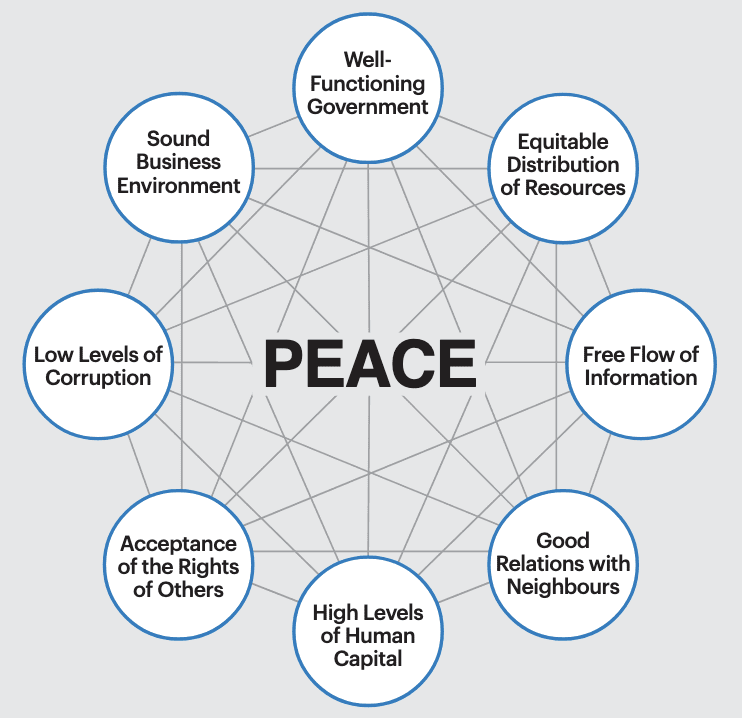
To read more about the Positive Peace Report for 2022, go here: https://www.economicsandpeace.org/wp-content/uploads/2022/01/PPR-2022-web-1.pdf.
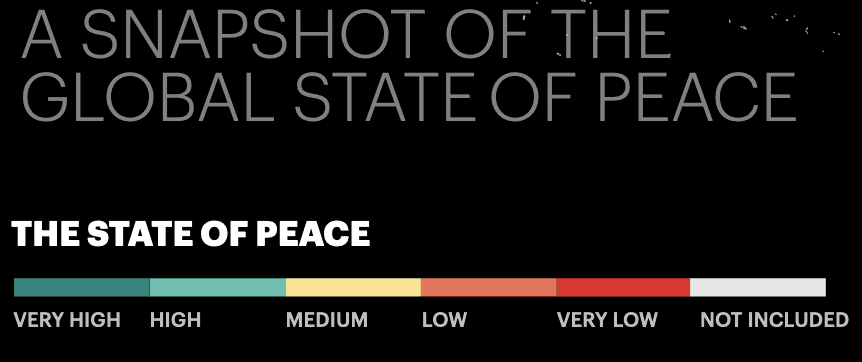
A quick snapshot of the countries in the world, and where they fall on the State of Peace measure. The US ranks 122 of the 163 measured countries – a ranking of medium, down two percent from the year before. Russia ranked 154. The Ukraine, 142. China ranks 100.
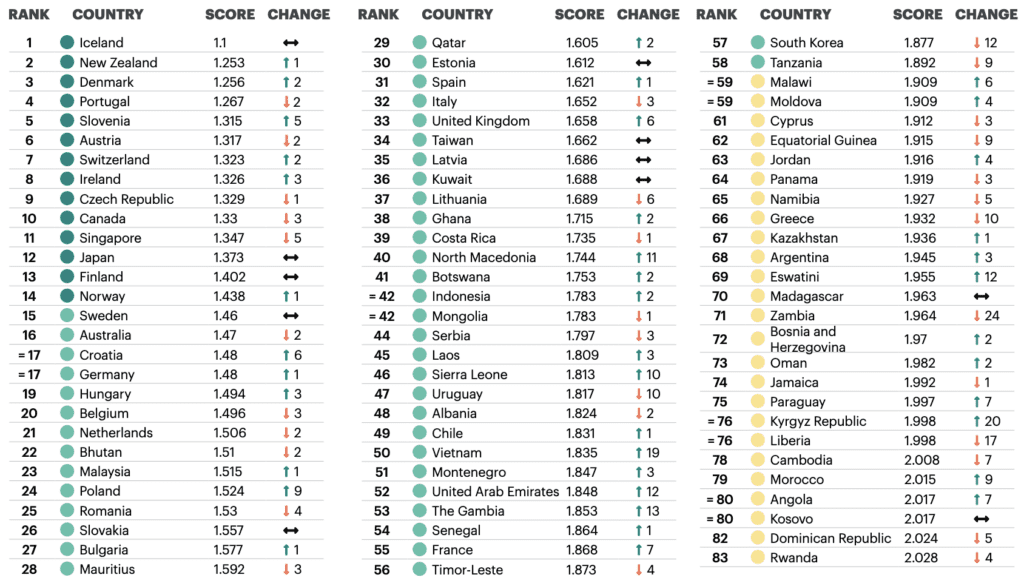
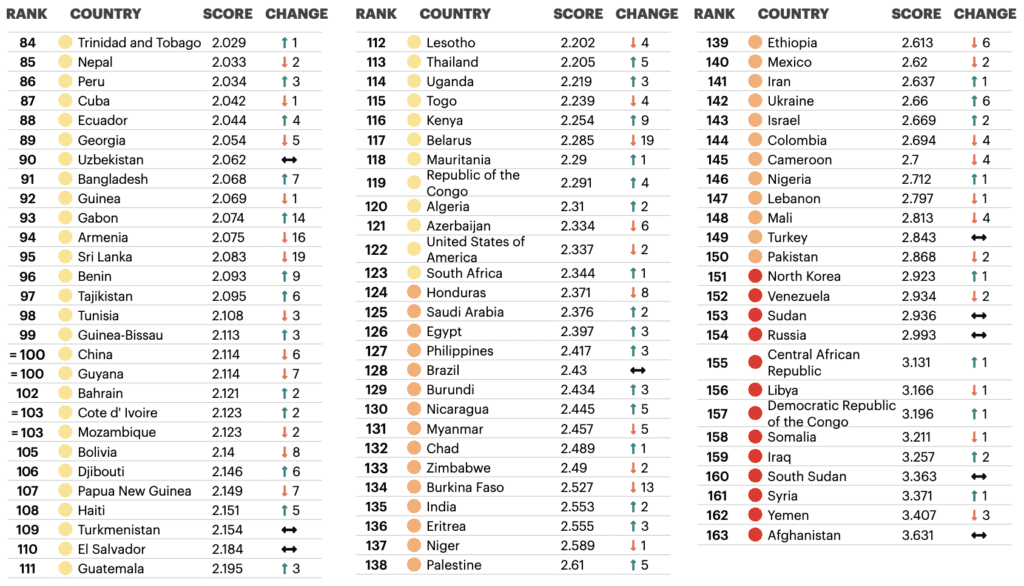
Peace can change overnight:
The Ukraine recorded the largest improvement in peacefulness on the 2021 GPI with its score improving by 7.6 per cent, leading to a rise of five places in the rankings to 142nd. Ukraine has recorded consistent increases in peacefulness since the outbreak of conflict in 2014, with its score improving for four out of the past five years. However, Ukraine still faces many challenges to peace, particularly
in the Safety and Security domain.
Read the full report here:
About The Institute for Economics and Peace
Quantifying Peace and its Benefits – The Institute for Economics & Peace (IEP) is an independent, non-partisan, non-profit think tank dedicated to shifting the world’s focus to peace as a positive, achievable, and tangible measure of human well-being and progress. IEP achieves its goals by developing new conceptual frameworks to define peacefulness; providing metrics for measuring peace; and uncovering the relationships between business, peace and prosperity as well as promoting a better understanding of the cultural, economic and political factors that create peace.
IEP is headquartered in Sydney, with offices in New York, The Hague, Mexico City, Brussels and Harare. It works with a wide range of partners internationally and collaborates with intergovernmental organizations on measuring and communicating the economic value of peace.
For more information visit www.economicsandpeace.org
